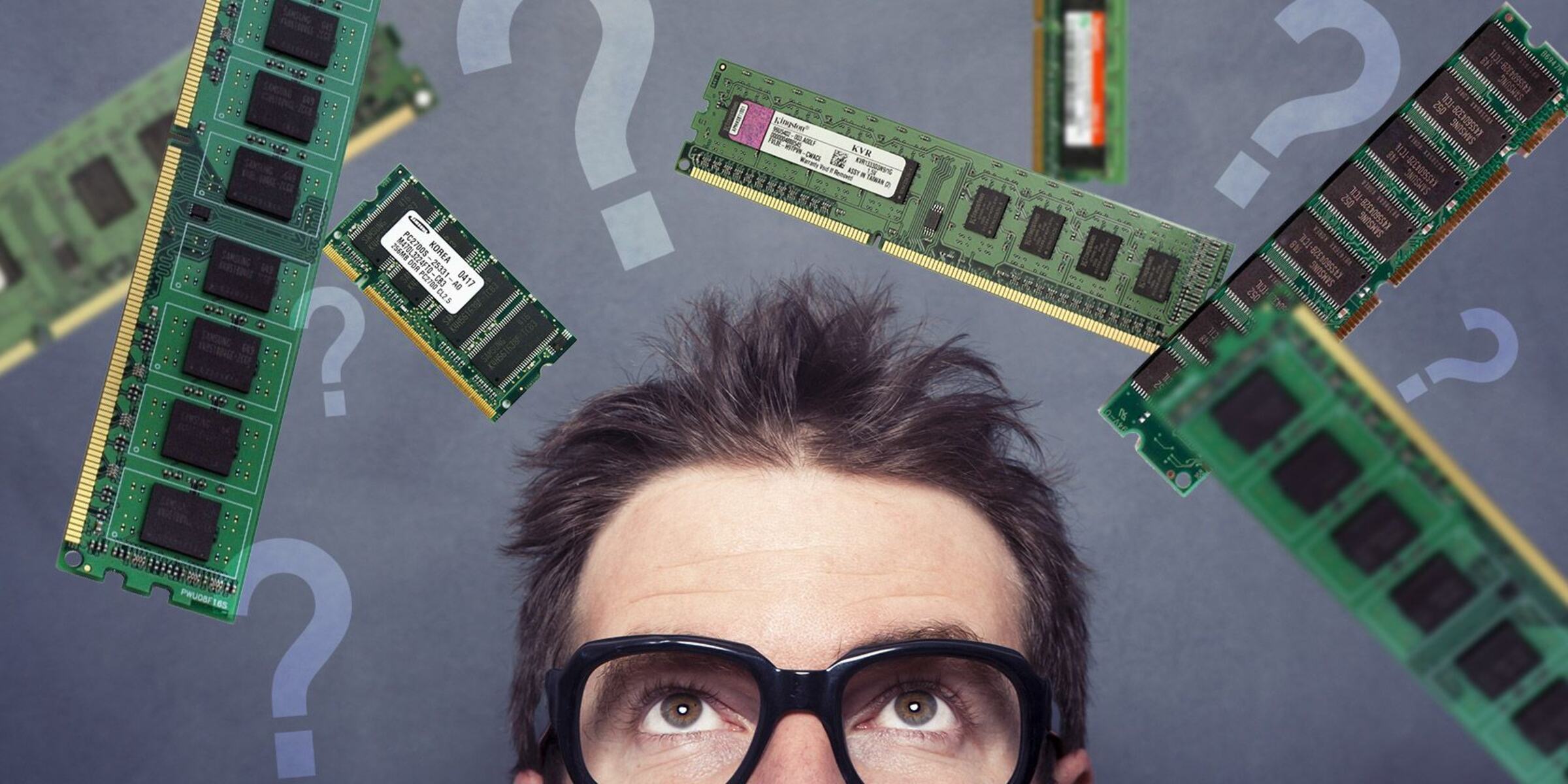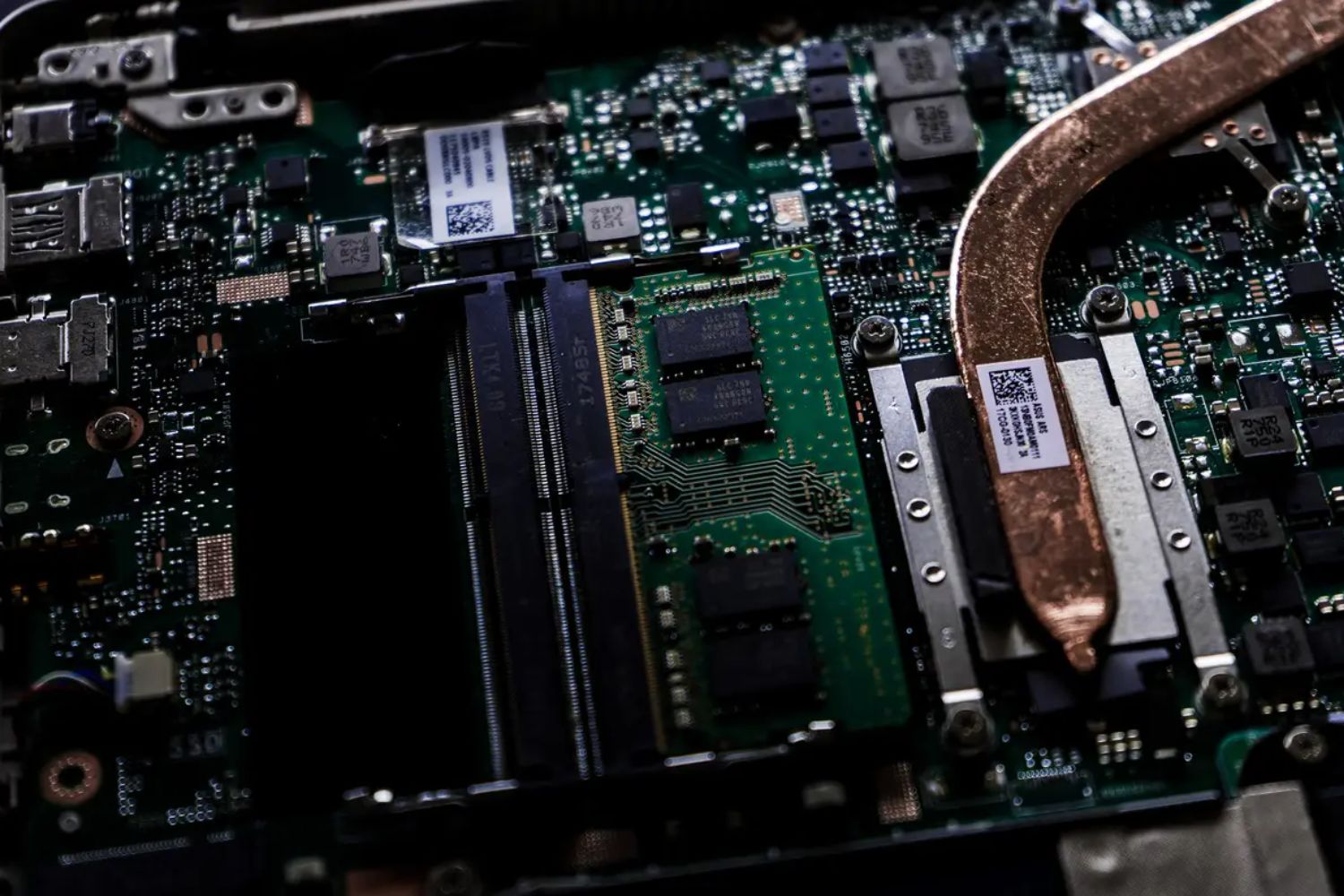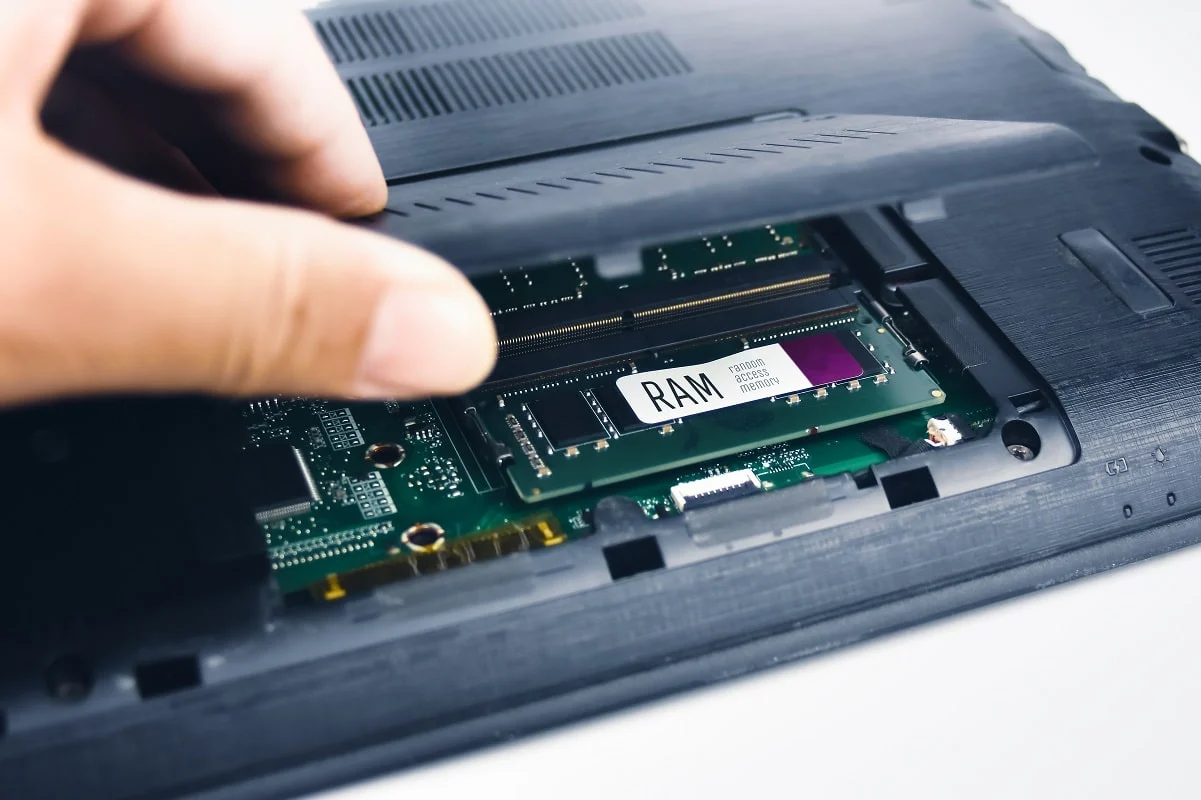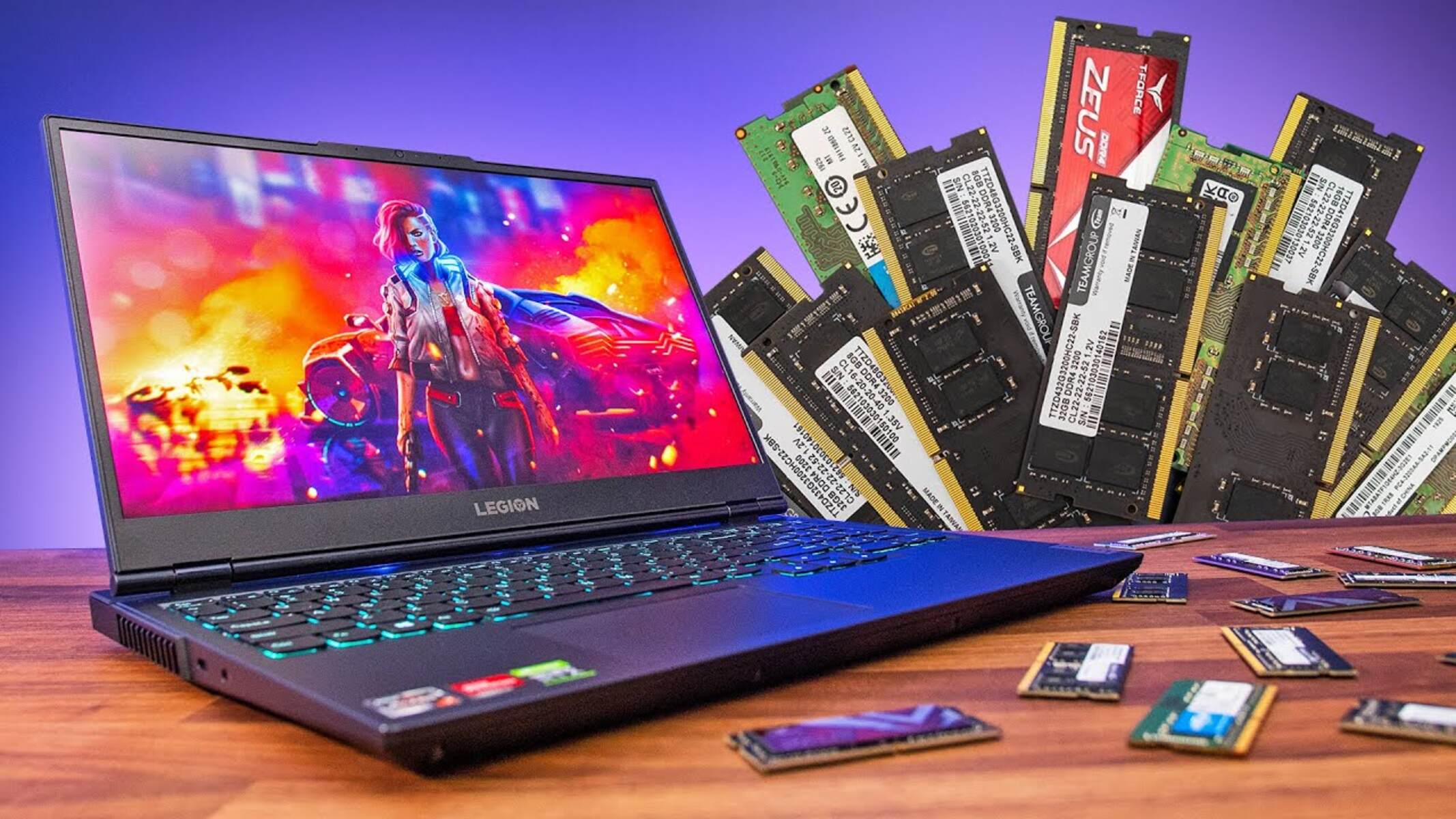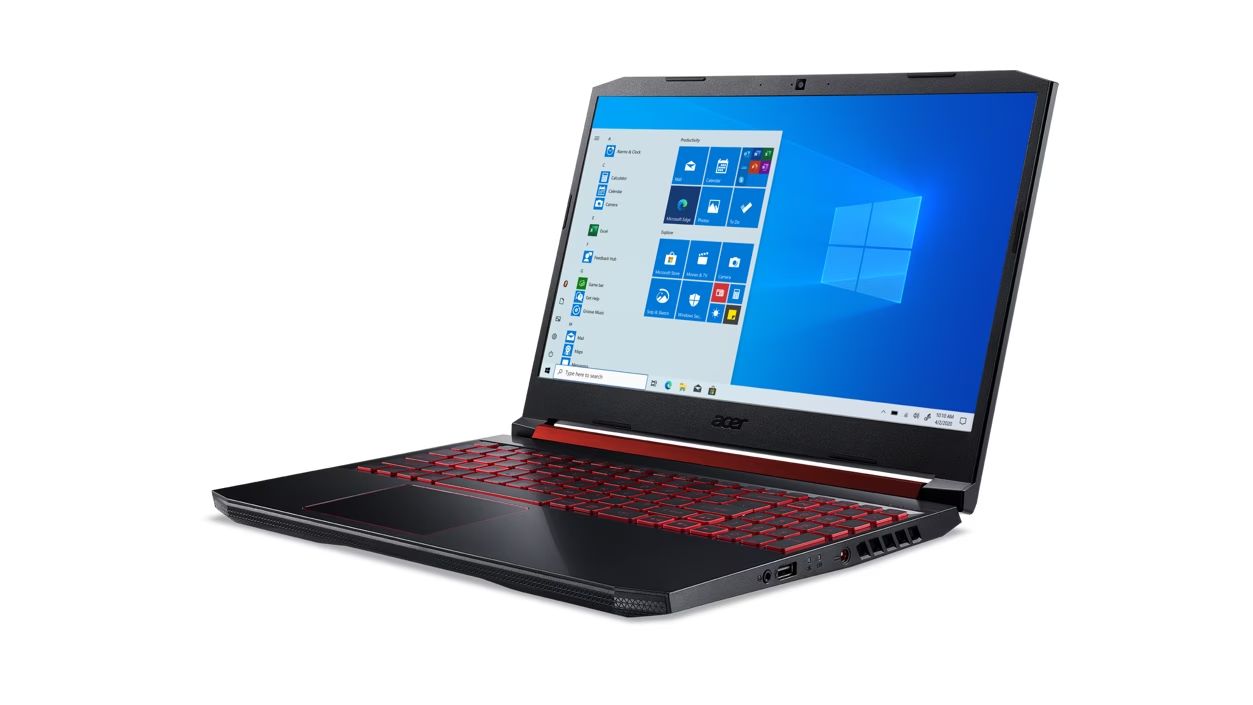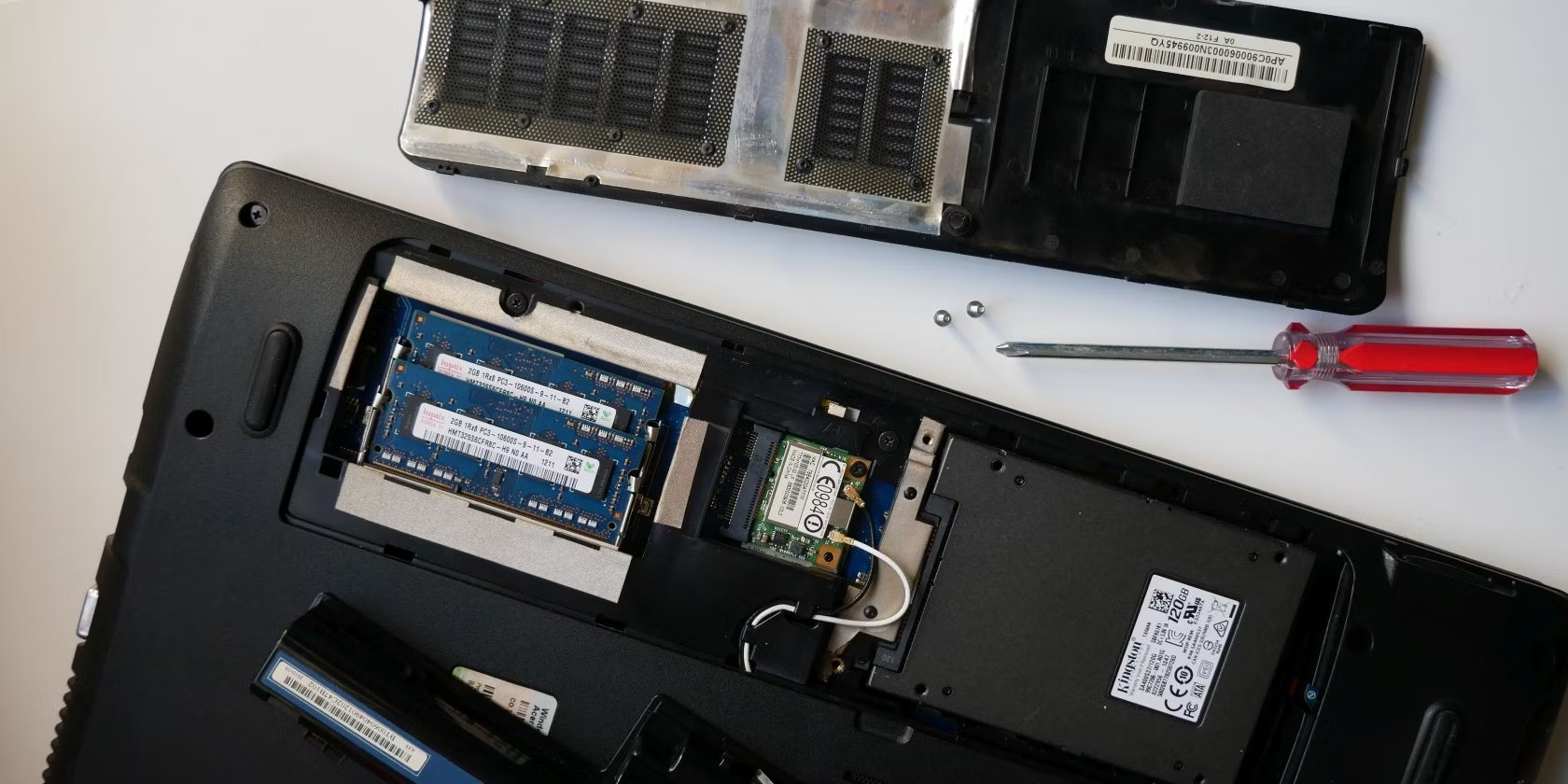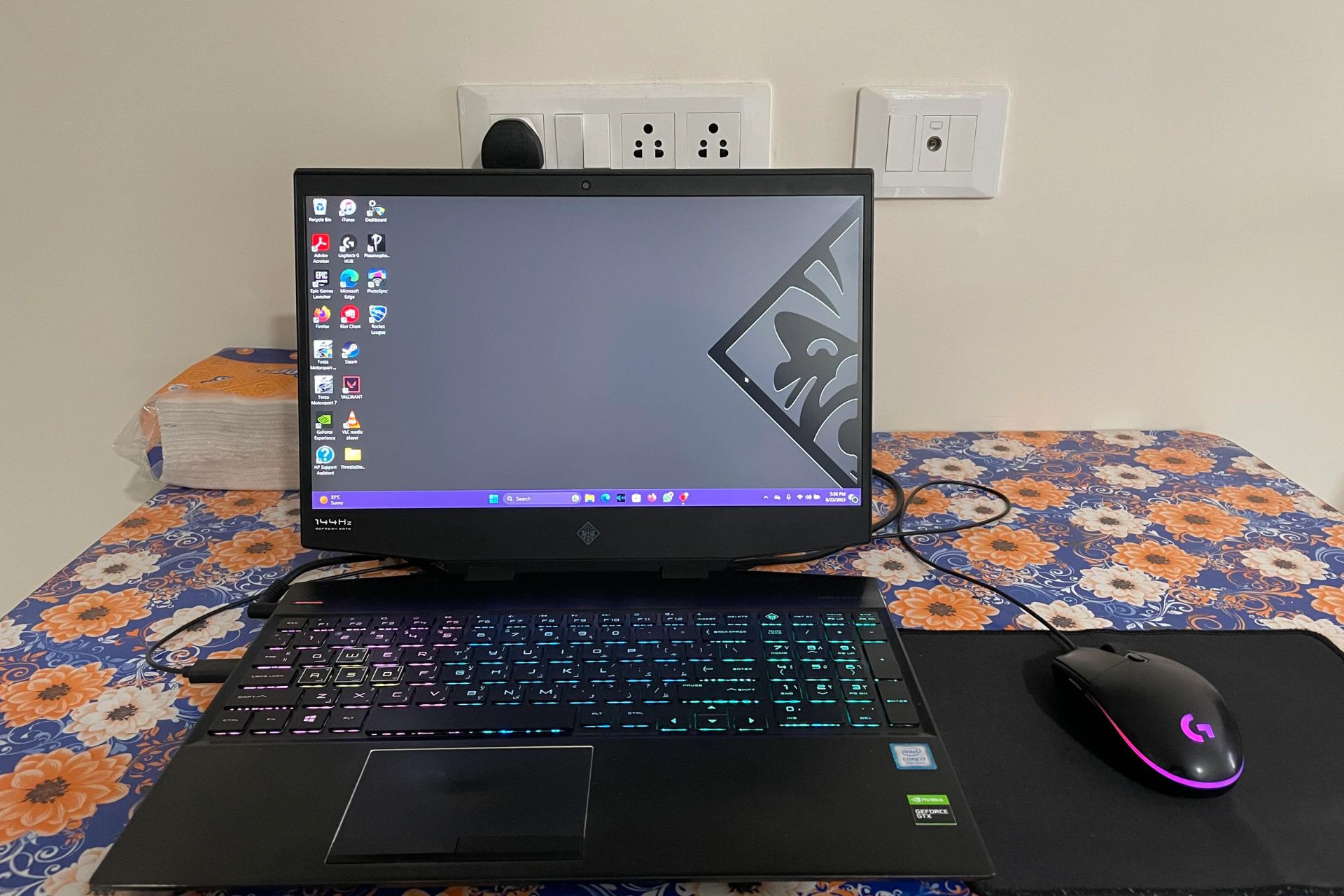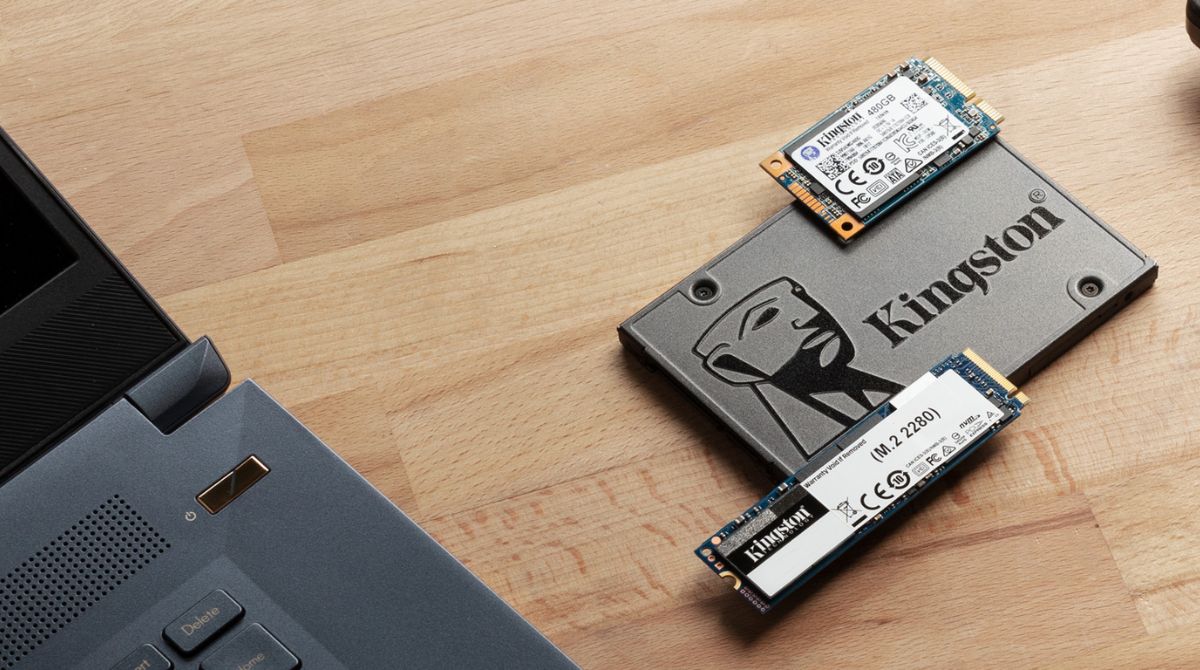Introduction
Welcome to the world of laptops, where portability and performance come together. Whether you use your laptop for work, gaming, or entertainment, one crucial component that determines its speed and efficiency is the RAM (Random Access Memory). RAM is like the short-term memory of your laptop, allowing it to quickly access and process data.
If you’re wondering, “How much RAM do I need for a laptop?”, you’re not alone. Choosing the right amount of RAM can be a bit confusing, as it depends on several factors, including your usage requirements, budget, and future needs. In this article, we’ll delve into the world of laptop RAM and help you understand how much RAM is ideal for your specific needs.
Before we dive in, let’s take a moment to understand what RAM is and its role in your laptop’s performance. RAM is a type of computer memory that is used to store data temporarily while your laptop is operating. It plays a vital role in multitasking and allows your laptop to handle numerous tasks simultaneously without slowing down.
The importance of RAM in your laptop cannot be overstated. Insufficient RAM can lead to sluggish performance, frequent freezing or crashing, and overall frustration. On the other hand, having more RAM than you need can be a waste of money. It’s essential to strike the right balance and choose the optimal amount of RAM that meets your requirements without breaking the bank.
Now that you understand the significance of RAM in your laptop’s performance, let’s explore the factors you should consider when determining how much RAM you need for your specific usage.
Understanding RAM
Before we delve into how much RAM you need for a laptop, it’s important to have a basic understanding of what RAM is and how it works. RAM, or Random Access Memory, is a crucial component that affects your laptop’s performance. It acts as a temporary storage space where your laptop can quickly access and manipulate data while it’s running.
Think of RAM as a workspace for your laptop’s processor. When you open an application or a file, it gets loaded into the RAM so that the processor can easily access and work with the data. The more RAM you have, the more data your laptop can store and access quickly, resulting in smoother and faster performance.
Unlike your laptop’s storage drive (such as a hard disk drive or solid-state drive), RAM is volatile memory, meaning it does not retain data when your laptop is powered off. When you turn off your laptop, any data stored in RAM is lost. This is why it’s essential to save your files before shutting down your laptop to prevent data loss.
RAM is measured in gigabytes (GB), and the amount you need depends on your specific usage requirements. If you use your laptop for basic tasks like web browsing, email, and document editing, you can get by with a smaller amount of RAM, such as 4GB or 8GB. However, if you engage in more demanding activities like gaming, graphic design, or video editing, you’ll require a larger amount of RAM to ensure smooth and efficient performance.
It’s important to note that RAM is not the same as your laptop’s storage capacity. While the storage drive holds your files and programs for long-term storage, RAM is responsible for the temporary data your laptop needs to process and execute tasks in real-time. Having a large storage capacity does not necessarily mean your laptop will perform better if you have insufficient RAM.
In the next section, we’ll explore the importance of RAM in a laptop and how it can impact your overall experience. Understanding the role of RAM in your laptop’s performance will help you make informed decisions when determining how much RAM you need.
Importance of RAM in a Laptop
RAM, or Random Access Memory, plays a crucial role in the overall performance and responsiveness of your laptop. It acts as a temporary storage space that allows your laptop’s processor to quickly access and manipulate data. The amount of RAM in your laptop directly impacts its ability to handle multitasking, run memory-intensive applications, and deliver a smooth user experience.
One of the primary benefits of having an adequate amount of RAM is improved multitasking capability. Imagine trying to work on a document while running several browser tabs, listening to music, and having a video chat open. Insufficient RAM can lead to lagging, freezing, and overall poor performance. By having enough RAM, your laptop can seamlessly handle multiple tasks simultaneously, without interruptions or slowdowns.
Another aspect where RAM is crucial is running memory-intensive applications. If you’re into gaming, graphic design, or video editing, you need a laptop with enough RAM to handle the demands of these applications. These tasks often require large amounts of data to be loaded into memory, and insufficient RAM can result in lag, choppy graphics, and frustrating rendering times. Upgrading your RAM can significantly improve the performance and efficiency of these applications, allowing you to multitask smoothly and complete your tasks more quickly.
Moreover, RAM also plays a role in loading and accessing files. When you open an application or a large file, it gets loaded into RAM for faster access. This means that having higher RAM capacity can reduce loading times, ensuring that your laptop runs smoothly and efficiently. Whether you’re launching your favorite game, working with large design files, or editing high-definition videos, having enough RAM ensures a seamless experience with minimal latency.
It’s important to note that the importance of RAM increases as technology evolves. As software becomes more demanding and resource-hungry, having sufficient RAM becomes even more critical. Adequate RAM not only enhances your laptop’s performance but also improves its longevity. By future-proofing your laptop with enough RAM, you can ensure it remains capable of handling future software updates and emerging technologies.
To optimize the performance of your laptop, it’s essential to consider the specific requirements of your usage. In the next section, we’ll explore the factors to consider when determining how much RAM you need for your laptop, based on your individual needs and preferences.
Factors to Consider when Determining RAM Needs
When it comes to determining how much RAM you need for your laptop, several factors should be taken into consideration. Understanding these factors will help you make an informed decision and ensure that your laptop performs optimally for your specific needs. Here are the key factors to consider:
- Usage Requirements: The primary consideration when determining your RAM needs is your intended usage. Different tasks and applications have varying memory requirements. If you primarily use your laptop for basic tasks like web browsing, email, and document editing, 8GB of RAM should suffice. However, if you engage in more memory-intensive activities like gaming, graphic design, or video editing, you may want to consider 16GB or more for a smoother experience.
- Operating System: The operating system you use also plays a role in determining the amount of RAM you need. While most modern operating systems can run on 4GB or 8GB of RAM, having more RAM can enhance the overall performance and responsiveness, especially if you use resource-intensive features or multitask frequently.
- Future Needs: Consider your future needs when choosing the amount of RAM for your laptop. If you plan to keep your laptop for several years or anticipate using more memory-intensive applications in the future, it is advisable to opt for a higher amount of RAM from the start. This way, you won’t have to upgrade your RAM in the near future and can ensure that your laptop remains capable of handling evolving software requirements.
- Budget: Budget is an important consideration when deciding on the amount of RAM for your laptop. RAM prices can vary, and higher capacity RAM modules tend to be more expensive. Evaluate your budget and weigh it against your usage requirements to strike a balance between performance and affordability.
- Upgradeability: Consider the upgrade options available for your laptop. Some laptops have easily accessible RAM slots that allow you to upgrade the memory at a later stage, while others may have soldered RAM that cannot be upgraded. If you have the option to upgrade in the future, you can start with a lower amount of RAM and upgrade when needed.
By taking these factors into account, you can determine how much RAM you actually need for your laptop. It’s important to note that these are general guidelines, and individual needs may vary. Consider your specific usage requirements, future needs, and budget to make an informed decision that ensures optimal performance for your laptop.
Common RAM Requirements for Different Usages
The amount of RAM you need for your laptop depends on the specific usage requirements and applications you frequently use. While there isn’t a one-size-fits-all answer, here are some common RAM requirements for different types of usages:
- Basic Tasks: If you primarily use your laptop for everyday tasks like web browsing, email, streaming videos, and document editing, 8GB of RAM should be sufficient. This amount of RAM allows you to multitask smoothly, open multiple browser tabs, and run basic applications without any noticeable slowdowns.
- Casual Gaming and Entertainment: If you’re a casual gamer or enjoy streaming movies or music, you might benefit from having 8GB to 16GB of RAM. Many popular games and streaming platforms recommend at least 8GB of RAM to ensure smooth gameplay and streaming without any lag or buffering issues. Having additional RAM can also help in faster loading times and smoother multitasking between gaming and other applications.
- Professional applications and multitasking: For professionals who work with memory-intensive applications like Adobe Creative Suite, AutoCAD, or 3D modeling software, having 16GB or more RAM is recommended. These applications often require a large amount of memory for handling complex files, rendering graphics, and running multiple applications simultaneously. Having ample RAM ensures smooth performance and minimizes any slowdowns during intensive workloads.
- Gaming and Graphic Intensive Tasks: If you’re a serious gamer or work with graphically demanding applications, you’ll benefit from having 16GB to 32GB of RAM. This amount of memory allows for smoother gameplay, better graphics rendering, and efficient handling of large game files or high-resolution design projects. It also enables you to run other resource-intensive applications simultaneously without any performance bottlenecks.
- Video Editing and 3D Rendering: Video editing and 3D rendering require significant memory resources. Professionals in these fields often opt for 32GB or even 64GB of RAM to handle large video files, complex editing tasks, and real-time rendering. The higher RAM capacity ensures faster rendering times, smoother playback, and efficient multitasking with other resource-heavy applications.
Remember, these recommendations are a starting point, and your specific needs may vary depending on the complexity and intensity of your tasks. It’s always a good idea to check the system requirements of the software and applications you use to determine the optimal amount of RAM needed. Having sufficient RAM ensures that your laptop can handle your tasks with ease, without any performance limitations or bottlenecks.
RAM Recommendations for Everyday Use
If you primarily use your laptop for everyday tasks like web browsing, email, document editing, and multimedia streaming, you can comfortably get by with a modest amount of RAM. Here are some RAM recommendations for everyday use:
- 4GB of RAM: While 4GB of RAM may be the minimum requirement for running modern operating systems, it is generally recommended to have at least 8GB of RAM for a smoother experience. However, if you have a tight budget or use your laptop for very basic tasks, 4GB of RAM can suffice.
- 8GB of RAM: This is the sweet spot for most users who engage in regular everyday activities. With 8GB of RAM, you can comfortably browse the web with multiple tabs open, check emails, stream music or videos, and use office applications without any noticeable slowdowns.
- 16GB of RAM: If you frequently work with multiple applications open simultaneously or engage in light multitasking, upgrading to 16GB of RAM can provide even better performance. It allows for smoother multitasking, faster application launches, and improved responsiveness when switching between different tasks.
It’s worth noting that the RAM recommendations for everyday use can vary based on the specific operating system, applications, and personal preferences. While 8GB of RAM is typically sufficient for most users, upgrading to 16GB can future-proof your laptop and accommodate potential growth in memory requirements as software and operating systems evolve.
Keep in mind that if you have a limited budget or a laptop with limited upgradability, starting with 8GB of RAM should be adequate for everyday tasks. You can always consider upgrading later if you find your usage requirements increasing or if you plan to run resource-intensive applications.
Having sufficient RAM for everyday use ensures that your laptop operates smoothly and efficiently, allowing you to complete your tasks without any performance hiccups. Whether you’re browsing the internet, working on documents, or enjoying multimedia content, the recommended RAM configurations will help you experience a seamless and responsive computing experience for your everyday needs.
RAM Recommendations for Gaming and Graphic Intensive Tasks
If you’re a passionate gamer or work with graphic-intensive applications like video editing, 3D modeling, or graphic design, having sufficient RAM is crucial to ensure smooth performance. Here are some RAM recommendations for gaming and graphic-intensive tasks:
- 16GB of RAM: For most gamers, 16GB of RAM is the recommended starting point. This amount of memory allows for smooth gameplay and can handle most modern games without any issues. It also provides room for running background applications and processes, such as voice chat, game capture software, and streaming software.
- 32GB of RAM: If gaming is a serious passion or you find yourself running memory-intensive applications alongside your games, upgrading to 32GB of RAM is a worthwhile investment. It provides ample memory for seamless multitasking, smoother game performance, and a more responsive overall experience.
- 64GB of RAM: Professionals engaged in intensive graphic design, video editing, or 3D rendering may benefit from having 64GB of RAM. This higher capacity allows for faster rendering times, handling large project files, and running multiple resource-hungry applications simultaneously.
When it comes to gaming, the amount of RAM you need also depends on the specific games you play and their system requirements. Some newer games require more memory to run optimally, and having a higher RAM capacity can future-proof your gaming setup.
For graphic-intensive tasks, additional RAM enables smoother rendering operations, faster load times, and improved responsiveness when working with large files or complex projects. It also allows you to work with multiple applications simultaneously without experiencing sluggish performance or delays.
It’s important to note that RAM alone does not determine gaming performance or graphic design capabilities. Other factors, such as your graphics card, processor, and storage drive, also play significant roles. However, having sufficient RAM ensures that your laptop can handle memory-intensive operations and allows these components to work together effectively.
Additionally, if you’re a content creator or plan to use virtual machines, consider higher RAM configurations to accommodate the additional memory requirements of these tasks. Having more RAM also provides headroom for potential future software updates and technological advancements.
Ultimately, selecting the right amount of RAM for gaming and graphic-intensive tasks depends on your specific needs, budget, and future plans. Consider your usage requirements and the system requirements of the games and applications you use to make an informed decision that ensures optimal performance and a seamless experience.
RAM Recommendations for Video Editing and 3D Rendering
Video editing and 3D rendering are highly resource-intensive tasks that require a significant amount of memory. To ensure smooth and efficient operations, it’s important to have an ample amount of RAM. Here are some RAM recommendations for video editing and 3D rendering:
- 32GB of RAM: For most video editing tasks, having 32GB of RAM is highly recommended. This amount of memory allows for faster rendering times, smoother video playback, and efficient handling of large video files. It also provides room for seamless multitasking, such as editing multiple videos simultaneously or running other resource-intensive applications alongside your editing software.
- 64GB of RAM: Professional video editors and 3D rendering artists who work with complex projects and large file sizes should consider upgrading to 64GB of RAM. This higher capacity allows for even faster rendering and smoother playback, especially when working with high-resolution footage or complex visual effects. It also enables you to handle multiple projects and applications simultaneously, without compromising performance.
- 128GB of RAM: If you work with extremely large video files, perform complex 3D rendering, or use advanced software with high memory demands, having 128GB of RAM can provide a significant performance boost. This amount of memory ensures ultra-smooth rendering, rapid data access, and the ability to handle the most demanding tasks in the video editing and 3D rendering fields.
Video editing and 3D rendering benefit greatly from increased RAM capacity as it allows for faster data access, efficient caching, and seamless handling of complex operations. The higher amount of RAM not only improves the overall performance but also speeds up the workflow, reducing rendering times and minimizing delays.
It’s important to note that RAM alone does not determine the entire performance of the video editing or 3D rendering workflow. Other factors, such as the processor, graphics card, and storage drive, also play significant roles. However, having sufficient RAM allows these components to work together effectively, ensuring smooth and efficient operations.
Additionally, consider the software you use for video editing or 3D rendering and check its system requirements for recommended RAM specifications. Some software applications, especially those that handle complex effects or utilize advanced algorithms, may have specific RAM requirements that exceed the general recommendations.
By investing in the recommended RAM configurations for video editing and 3D rendering, you can optimize your workflow, increase productivity, and create professional-quality content without any performance bottlenecks.
Tips for Optimizing RAM Usage in Your Laptop
Optimizing the usage of RAM in your laptop is essential to ensure efficient performance and maximize available memory resources. Here are some tips to help you optimize RAM usage:
- Close unnecessary applications: Close any applications that are running in the background and are not in use. These applications consume memory resources, even if they are minimized, and can slow down your laptop’s performance. By closing unnecessary programs, you free up RAM for the tasks you’re actively working on.
- Manage startup programs: Review the list of programs that run automatically when your laptop starts up. Disable any unnecessary startup programs that you don’t use regularly. This prevents them from consuming valuable RAM and speeds up the booting process.
- Clear temporary files and caches: Regularly clear temporary files and caches to free up disk space and reduce the load on your RAM. Temporary files can accumulate over time and consume valuable memory resources. You can use built-in disk cleanup tools or third-party software to perform this task.
- Use a lightweight browser: If you frequently use a web browser, consider using a lightweight browser that has a smaller memory footprint. Some browsers are known to be more resource-intensive than others. Switching to a more efficient browser can help reduce RAM usage and improve overall system performance.
- Disable unnecessary visual effects: Disabling unnecessary visual effects can help reduce the strain on your laptop’s resources. Adjust the visual settings in your operating system to minimize animations, transparency effects, and other resource-intensive graphical elements. This allows your laptop to allocate more memory to the actual tasks you’re working on.
- Upgrade your operating system: Keeping your operating system up to date ensures that you have the latest performance improvements and optimizations. Updates often include bug fixes and memory management enhancements, leading to better RAM utilization and overall system performance.
- Upgrade your RAM: If you consistently find yourself running out of memory or experiencing slowdowns due to high memory usage, consider upgrading your RAM. Adding more RAM to your laptop allows it to handle more tasks simultaneously and can greatly improve overall performance and responsiveness.
Remember, optimizing RAM usage is a continuous effort, and regularly implementing these tips can help you keep your laptop running smoothly. It’s important to strike a balance between utilizing available memory resources and managing the number of applications and processes running simultaneously.
By following these optimization techniques, you can ensure efficient RAM usage, reduce performance bottlenecks, and maximize the capabilities of your laptop.
Conclusion
Understanding how much RAM you need for your laptop is essential for ensuring optimal performance and efficiency. The right amount of RAM depends on your specific usage requirements, budget, and future needs. Whether you use your laptop for everyday tasks, gaming, graphic design, video editing, or other memory-intensive activities, having sufficient RAM can significantly enhance your experience.
When determining your RAM needs, consider factors such as your usage requirements, operating system, future needs, budget, and upgradeability options. For everyday tasks, 8GB of RAM is typically sufficient, while gaming and graphic-intensive tasks may benefit from 16GB or more. Video editing and 3D rendering professionals often opt for 32GB or higher to handle large project files and complex operations.
Optimizing RAM usage is also important to ensure efficient performance. By closing unnecessary applications, managing startup programs, clearing temporary files, and making use of lightweight browsers, you can free up memory resources and improve system responsiveness. Additionally, consider upgrading your RAM if you consistently experience high memory usage and performance issues.
Remember that RAM is just one aspect of your laptop’s overall performance. Other components such as the processor, graphics card, and storage drive also play a role. It’s important to strike a balance and ensure that all components work together harmoniously for optimal performance.
Ultimately, finding the right amount of RAM for your laptop involves analyzing your usage patterns, considering your specific needs, and making an informed decision. By doing so, you can ensure that your laptop runs smoothly, handles your tasks efficiently, and provides an enjoyable computing experience.







